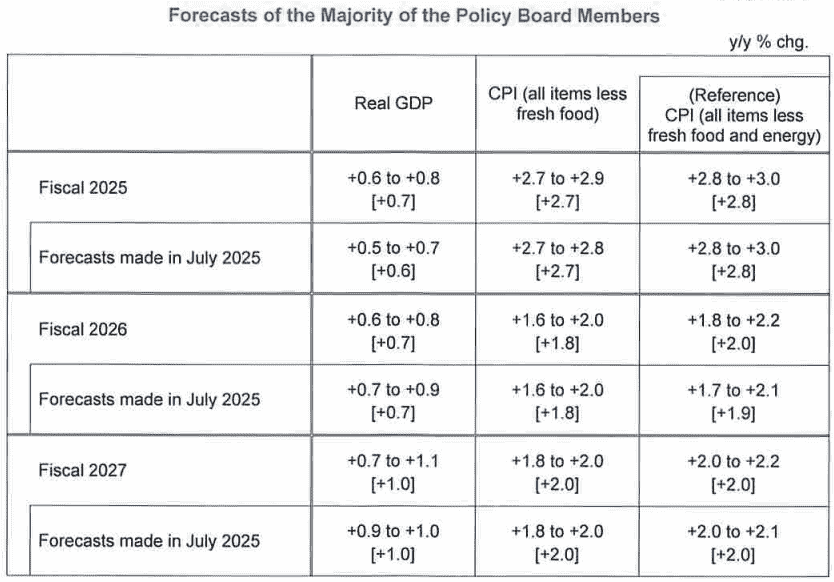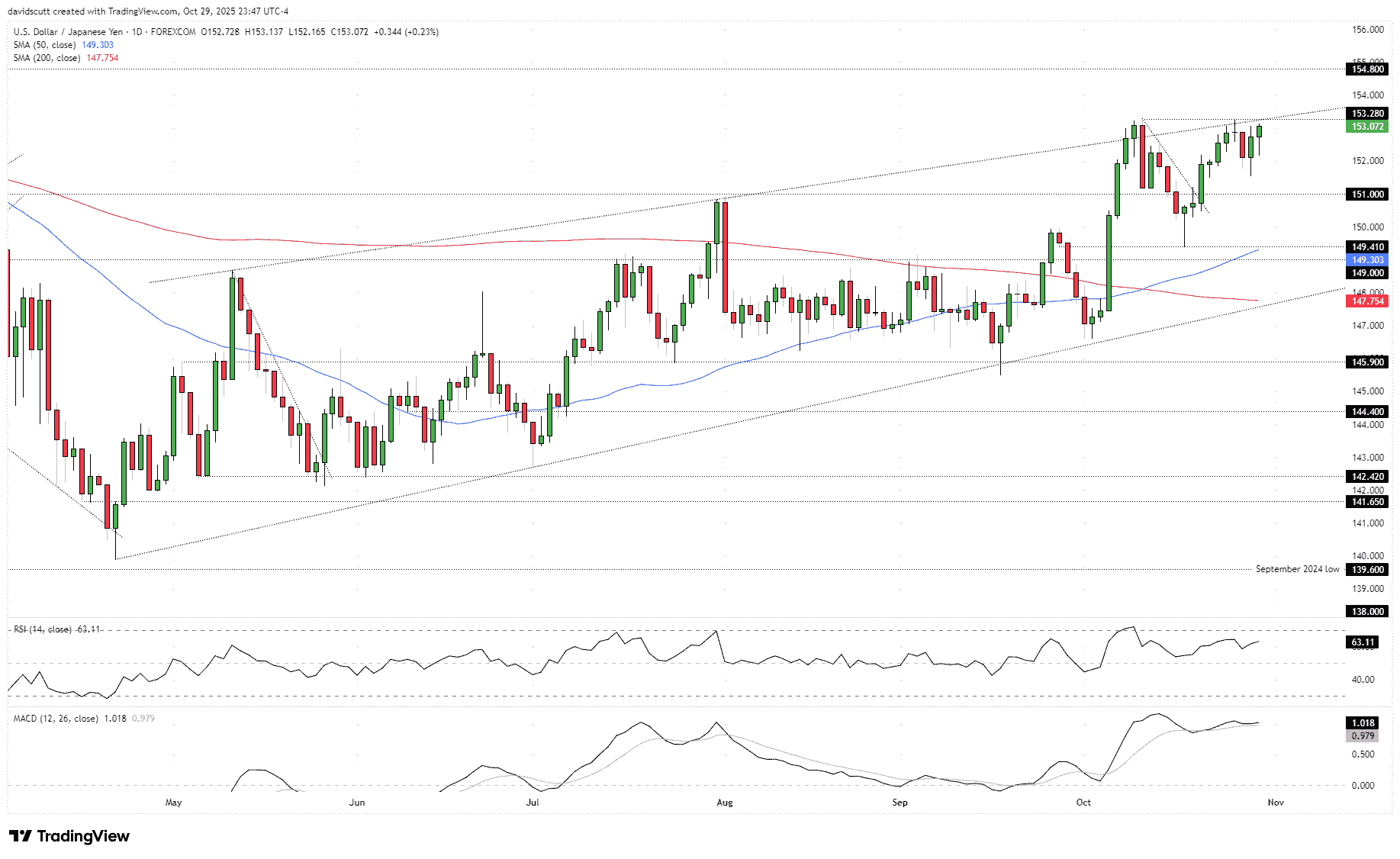TSX drops after Canadian index edges higher in prior session
Despite keeping rates unchanged in October, two BoJ board members again pushed for a hike, keeping the risk of a move before year-end alive. Traders are now focused on inflation data with swaps pricing slightly favouring a December hike.
- BOJ keeps rates at 0.5%, two dissenters back a hike
- Inflation, GDP forecasts largely unchanged
- Traders price 55% chance of December hike ahead
- Tokyo CPI key release on Friday
- USD/JPY reverses early losses, eyes October highs
Summary
The Bank of Japan (BOJ) held rates steady in October, leaving key growth and inflation forecasts largely unchanged from three months earlier. That helped USD/JPY reverse higher for the session. However, with two board members again voting to increase policy rates, the risk of a hike by year-end remains, especially if trade uncertainty continues to fade.
BOJ Delivers Repeat Performance
As widely expected, the BOJ left overnight rates unchanged at 0.5%, voting 7–2 in favour. Board member Takata and Tamura once again dissented, advocating for a 25bp increase to 0.75%. Takata argued Japan has shifted away from the deflationary environment of prior decades, suggesting the bank’s price stability mandate has essentially been met.
Tamura said price risks remain skewed to the upside, meaning policy rates should be closer to his assessed neutral rate—the level where rates neither stimulate nor restrict economic activity, theoretically keeping inflation stable.
Neither argument differed from those offered six weeks ago. The risk heading into the meeting was that another board member might join the dissenters. That didn’t happen, which largely explains why the yen weakened slightly after the decision.
Key Inflation, GDP Forecasts Largely Unchanged

Source: BOJ
Like the vote, updated growth and inflation forecasts were essentially unchanged. GDP is expected to grow 0.7% in the year beginning April 2026, with 2027 also left at 1%. With little change in expected activity, the bank’s preferred inflation measure—excluding fresh food—is seen holding two tenths below its 2% target in both years. Excluding both fresh food and energy, core-core inflation is forecast at 2% over both years, with the 2026 forecast revised up a tenth from 1.9%.
Given recent signs of disinflation—partly driven by government subsidies—Friday’s Tokyo inflation report for October will be closely watched. It arrives three weeks ahead of the nationwide report and comes as traders view the chance of a 25bp hike in December as a coin flip.
December Rate Hike Remains in Play

Source: Bloomberg
As shown in the implied swaps pricing from Bloomberg above, a hike at the final meeting of the year is marginally favoured at 55%. By the time FY26 wage negotiations are underway in March, a full hike is priced in, with another nearly fully factored by September.
The Tokyo inflation print could significantly influence that pricing, especially if it deviates from consensus. The ex-fresh food measure is expected to lift a tenth to 2.6%, as is the core-core measure. These are the key figures to watch—not the headline.

Source: TradingView
USD/JPY Bulls Eye Breakout

Source: TradingView
USD/JPY, down more than 0.3% before the decision, rallied once it came through, pushing back toward highs set earlier this month. With RSI (14) climbing above 50 but not yet overbought, upside pressure is building. MACD has confirmed the bullish signal, staging a crossover two weeks ago and continuing to trend higher. The setup favours buying dips and bullish breaks.
Should resistance at 153.28 crack, it may act as a launchpad for fresh bullish setups, allowing longs to be established on the break with a stop below for protection, targeting resistance at 154.80 initially.
Bullish setups would be further supported if BOJ Governor Ueda delivers dovish guidance, as has often been the case recently. Watch for his headlines to hit the tape in the coming hours. The ongoing meeting between Donald Trump and Xi Jinping will also be important.
Of course, if 153.28 resistance holds or unexpectedly bullish yen headlines emerge, the level could also be used to establish fresh shorts, with positions set beneath and a stop above for protection. 152.00 looms as an initial target, having provided support several times earlier this week. Below that, 151.00 would likely be the next port of call for bears.
